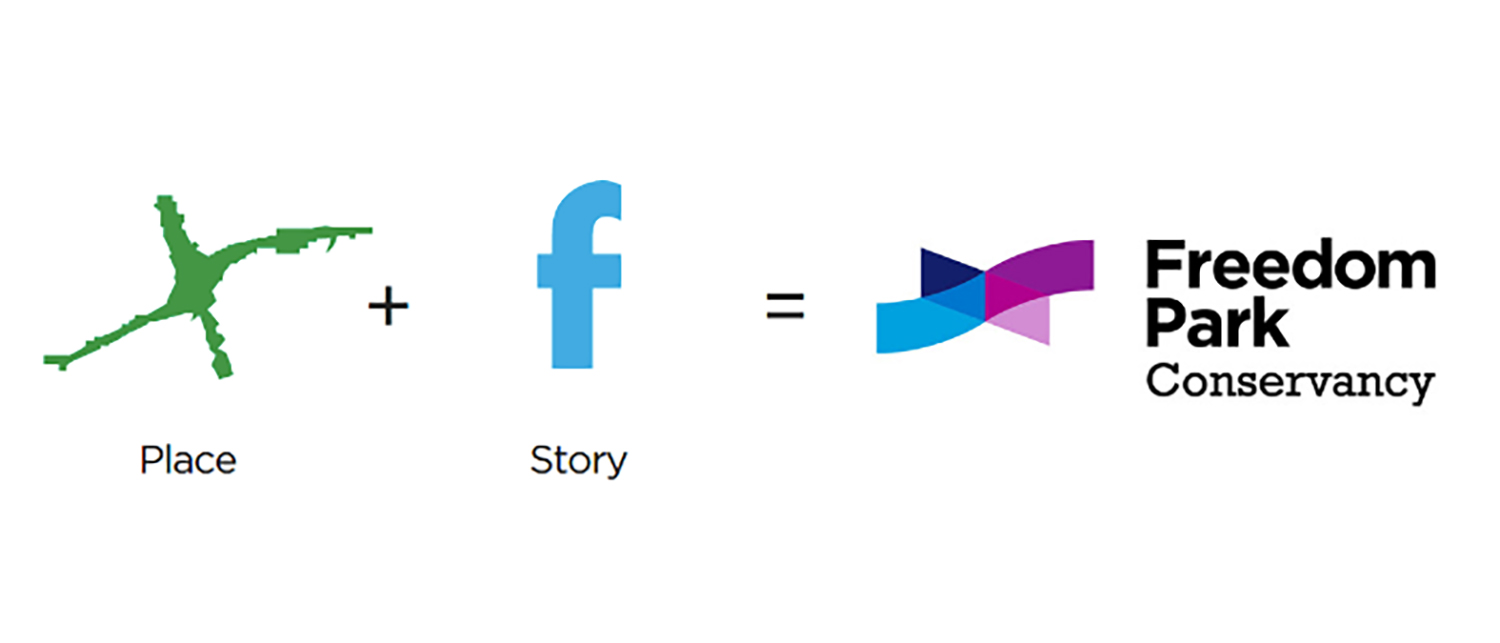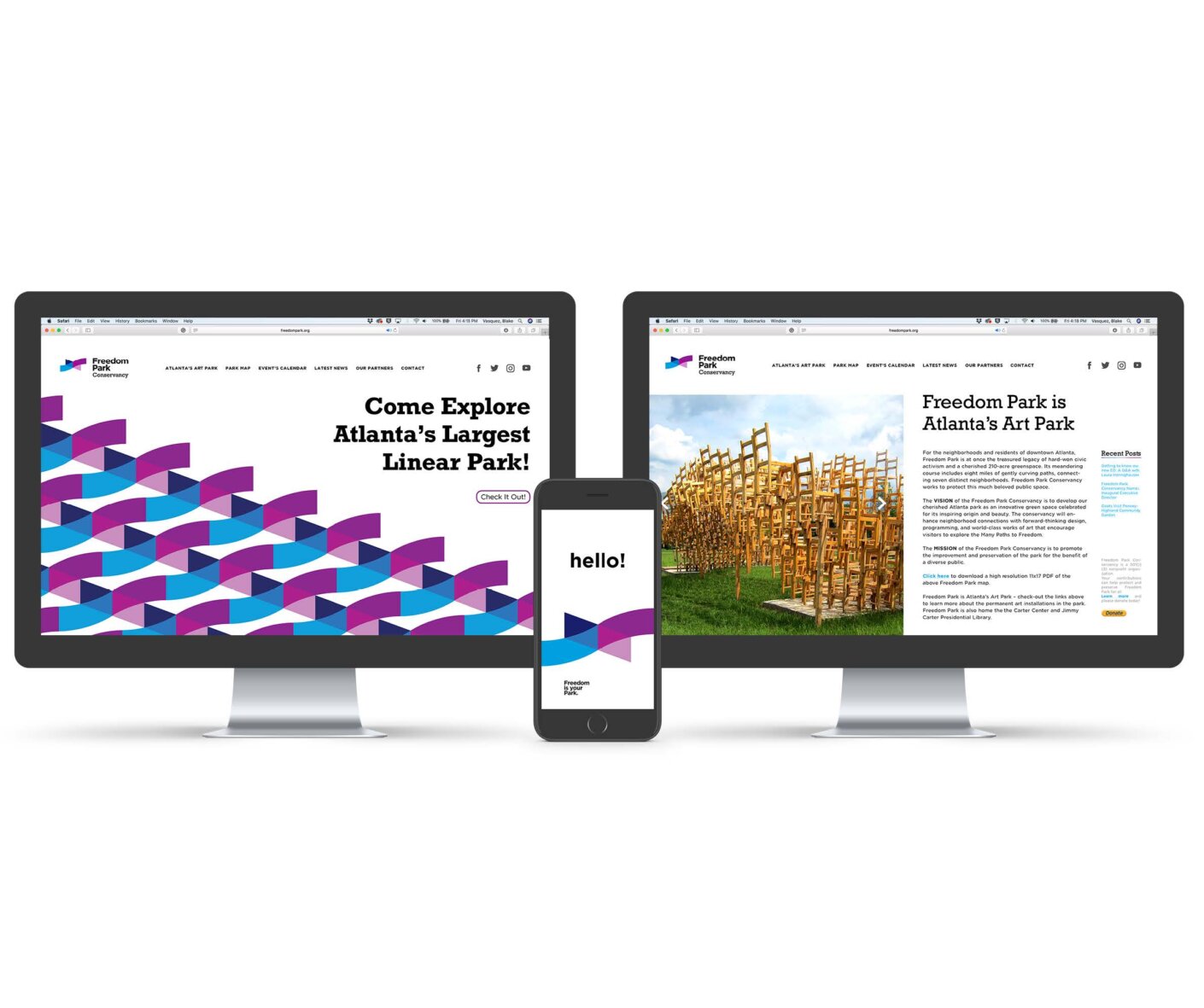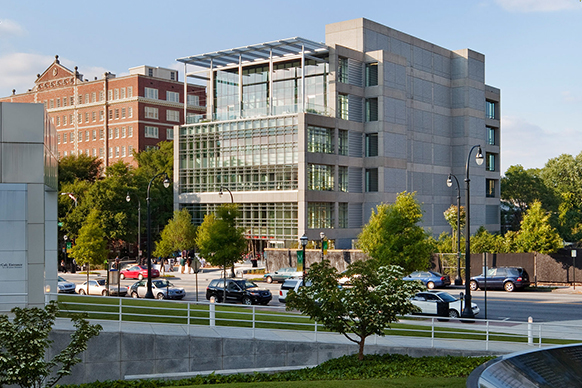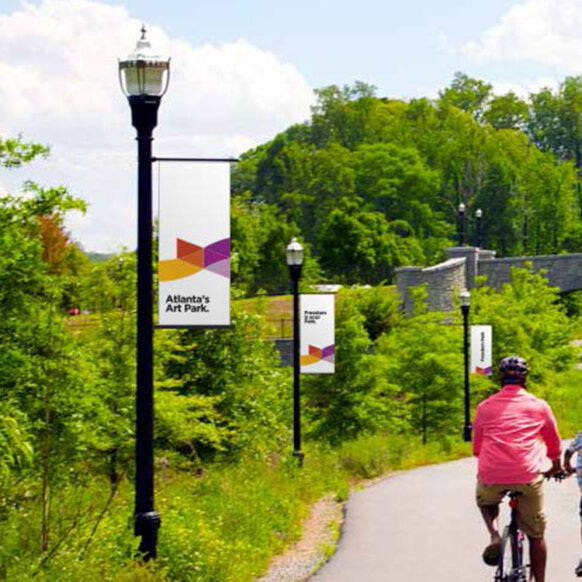I want things to be beautifully simple yet packed with meaning. That’s my aesthetic and my process.
As I’m designing, I am always asking myself, How many layers can I put in this one identity and make it clearer with each layer, not muddier? How can I play with color? With form and rhythm? Employ typography and line? How is it going to relate to the client and place?
I am so proud of the integrated color–and–pattern story we designed for the Greater Accra Regional Hospital at Ridge, in Ghana. It is as clean and sophisticated as the kente cloth that inspired it.
The story starts on the building façade with the mark—which we actually never intended to be the mark. I love that it doesn’t need any words. Everything you need to know to understand what happens inside the Accra Regional Hospital at Ridge sounds out loud and clear: Health. Culture. Hope. Life.





